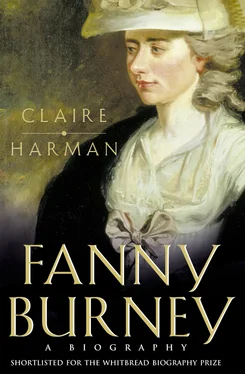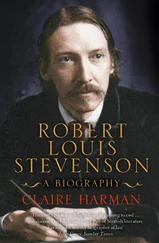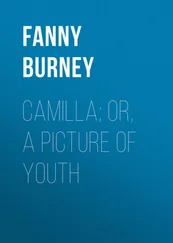Next came my scene; I was discovered Drinking Tea; – to tell you how infinitely , how beyond measure I was terrified at my situation, I really cannot […] The few Words I had to speak before Muslin came to me, I know not whether I spoke or not, – niether [sic] does any body else: – so you need not enquire of others, for the matter is, to this moment, unknown. 20
Fanny had a ‘ marking Face ’ 21 and was a violent blusher. ‘Nobody, I believe, has so very little command of Countenance as myself!’ she complained to Susan on one of the many occasions when her ‘vile Colouring’ gave her acute embarrassment. The causes of her embarrassment varied enormously. It was knowingness , not innocence, that made her self-conscious in front of people such as Richard Twiss, a traveller who on his first visit to the Burney household in 1774 indulged in very ‘free’ conversation with Dr Burney about the prostitutes in Naples. Asked by Twiss whether she knew what he meant by a ragazza , Fanny records, ‘I stammered out something like niether [sic] yes or no, because the Question rather frightened me, lest he should conclude that in understanding that , I knew much more .’ 22 The inference of course is that she did know ‘much more’. She certainly knew enough about John Cleland’s erotic Dictionary of Love to be embarrassed by Twiss’s reference to it on the same occasion. ‘Questa signora ai troppo modesta’, he said to Charles Burney of the blushing young woman he had been goading all evening, demonstrating the truth of James Fordyce’s observation in his Sermons that many men find ‘shyness’ in women attractive sexually as well as morally. Fordyce implies that ‘the precious colouring of virtue’ on a girl’s cheeks is the equivalent of showing a red rag to a bull: ‘Men are so made,’ he sighs complacently. 23 But Fanny was much more likely to have agreed with Jonathan Swift’s acid judgement of female ‘colouring’: ‘They blush because they understand.’ 24
Nevertheless she was highly resistant to sexual flattery, and too self-conscious to be vain. In her copious diary, she hardly ever mentions dress, although much of the needlework that the Burney girls, like all women of their class, were expected to do daily consisted in making and mending their own clothes. She disliked needlework and was not particularly good at it; if her clothes were ever eye-catching, it may not have been for the right reasons. Her best gown in 1777 was simply referred to as her ‘grey-Green’, presumably a silk or ‘tabby’, chosen to match the colour of her eyes.
Fanny Burney was quick to satirise the absurdities of fashion and personal vanity in her works: in Evelina the London modes provide plenty of humour, especially the mid-1770s fashion among women for high hair. In the novel, Miss Mirvan makes herself a cap, only to find that it won’t fit over her new coiffure, and Evelina herself, the country girl agog at the novelty of going ‘a-shopping, as Mrs Mirvan calls it’ 25 (it was a very recently coined word), gives an insider’s account of being pomaded, powdered and pinned:
I have just had my hair dressed. You can’t think how oddly my head feels; full of powder and black pins, and a great cushion on the top of it. I believe you would hardly know me, for my face looks quite different to what it did before my hair was dressed. When I shall be able to make use of a comb for myself I cannot tell for my hair is so much entangled, frizzled they call it, that I fear it will be very difficult. 26
In Fanny’s play The Witlings , the first scene is set in a milliner’s shop, among the ribbons and gee-gaws that recur in her works as symbols of luxury and waste. The shop girls are slaves to appearances: Miss Jenny has no appetite because ‘she Laces so tight, that she can’t Eat half her natural victuals,’ as one of the older women observes. ‘Ay, ay’, replies another, ‘that’s the way with all the Young Ladies; they pinch for their fine shapes’. 27 The unnaturalness of fashion struck Burney forcibly (as well it might in the age of hoops, stays, corsetry, high hair and silk shoes), but she also despised its triviality and the hold it had over so many women’s lives, confirming them in the eyes of unsympathetic men as inferior beings. In her play The Woman-Hater , misogynistic Sir Roderick describes womankind as ‘A poor sickly, mawkish set of Beings! What are they good for? What can they do? Ne’er a thing upon Earth they had not better let alone. […] what ought they to know? except to sew a gown, and make a Pudding?’ 28
Each of Burney’s novels contains some insight into the extent to which women are unfairly judged by their appearance. She was never very pleased with hers. Like all the Burneys she was very short – Samuel Johnson described her affectionately as ‘Lilliputian’ 29 – and slightly built, with very thick brown hair, lively, intelligent eyes and her father’s large nose. She had an inward-sloping upper lip inherited from her mother (Hetty and Susan had the same), small hands and narrow shoulders. The portrait painted by her cousin Edward Francesco Burney in 1782 shows a gentle, intelligent and attractive face. She thought he had flattered her horribly, but how many portrait painters do not idealise their sitters, especially when, like Edward, the artist is also an admirer? His second portrait of her, painted only two years later (it now hangs in the National Portrait Gallery), has her face partly shadowed by an enormous hat. Her look is more thoughtful, slightly uncomfortable, but the benignly intelligent expression is the same.
Fanny Burney’s short sight caused her trouble all her life and undoubtedly affected her behaviour. She became mildly paranoid about being scrutinised by other people because she couldn’t see their expressions clearly and only felt really comfortable with things which fell within the circle of her vision, such as books, writing and intimate friends. Short sight affected her writing too; the novels are remarkable for the avoidance of physical description and heavy reliance on dialogue to delineate character. Fanny owned an eye-glass, but was often inhibited from using it; at Lady Spencer’s in 1791 she ‘did not choose to Glass’ the company ‘& without, could not distinguish them’. 30 At court in the 1780s, the use of the eye-glass was, presumably, limited by protocol and many embarrassing incidents ensued when Fanny did not identify the King or Queen in time to respond correctly. She doesn’t seem to have owned a glass in 1773 when she went to a performance at Drury Lane by the singer Elizabeth Linley one month before that siren’s marriage to Richard Brinsley Sheridan; she could only make out Miss Linley’s figure […] & the form of her Face’. 31 By 1780, however, she could be pointed out at the theatre as ‘the lady that used the glass’. 32 Understandably, she hated to have attention drawn to her disability, and scorned one of Mrs Thrale’s acquaintance for suggesting that she could not see as far as the fire two yards away by answering his question ‘How far can you see?’ with a comical put-down; ‘O – I don’t know – as far as other people, but not distinctly ’. 33
Fanny’s constitution was basically strong, but easily affected by nervous ailments and stress. ‘[H]er Frame is certainly delicate & feeble’, Susan noted in her journal. ‘She is quickly sensible of fatigue & cannot long resist it & still more quickly touched by any anxiety or distress of mind’. 34 Fanny endured remarkable pain, both physical and mental, in the course of her long life, and survived the appalling mutilation of the mastectomy she underwent for cancer in 1811 with astonishing tenacity and powers of recuperation, yet she appears to have been something of a hypochondriac in her youth, impressed with a belief in her own fragility and half-expecting to die young, like her mother. When Mrs Thrale once exclaimed against the idea of Fanny marrying a man old enough to be her father, Fanny replied, ‘I dare say he will Live full as long as I shall, however much older he may be’. 35 The character of being frail, insubstantial, almost No-body, was oddly compelling, and she recorded with evident satisfaction the playwright Dr John Delap’s remark in 1779 that she was ‘the charmingest Girl in the World for a Girl who was so near being nothing , & they all agreed nobody ever had so little a shape before, & that a Gust of Wind would blow you quite away’. 36 The ‘Girl’ was, at this date, twenty-seven years old, unmarried, unhappy at being exposed to the public as a writer and not eating well.
Читать дальше












